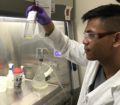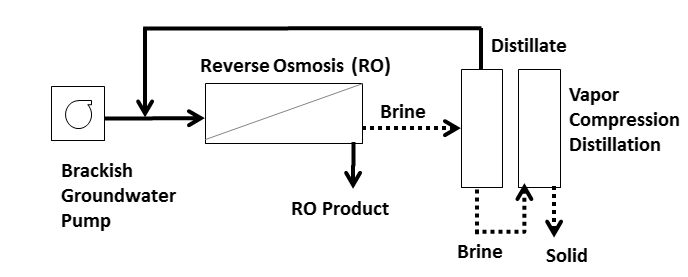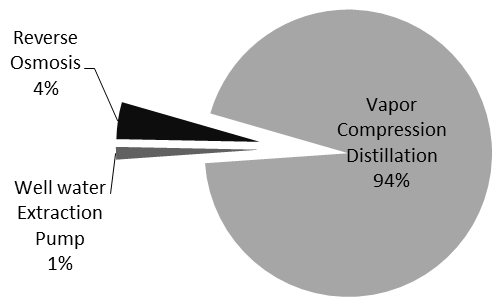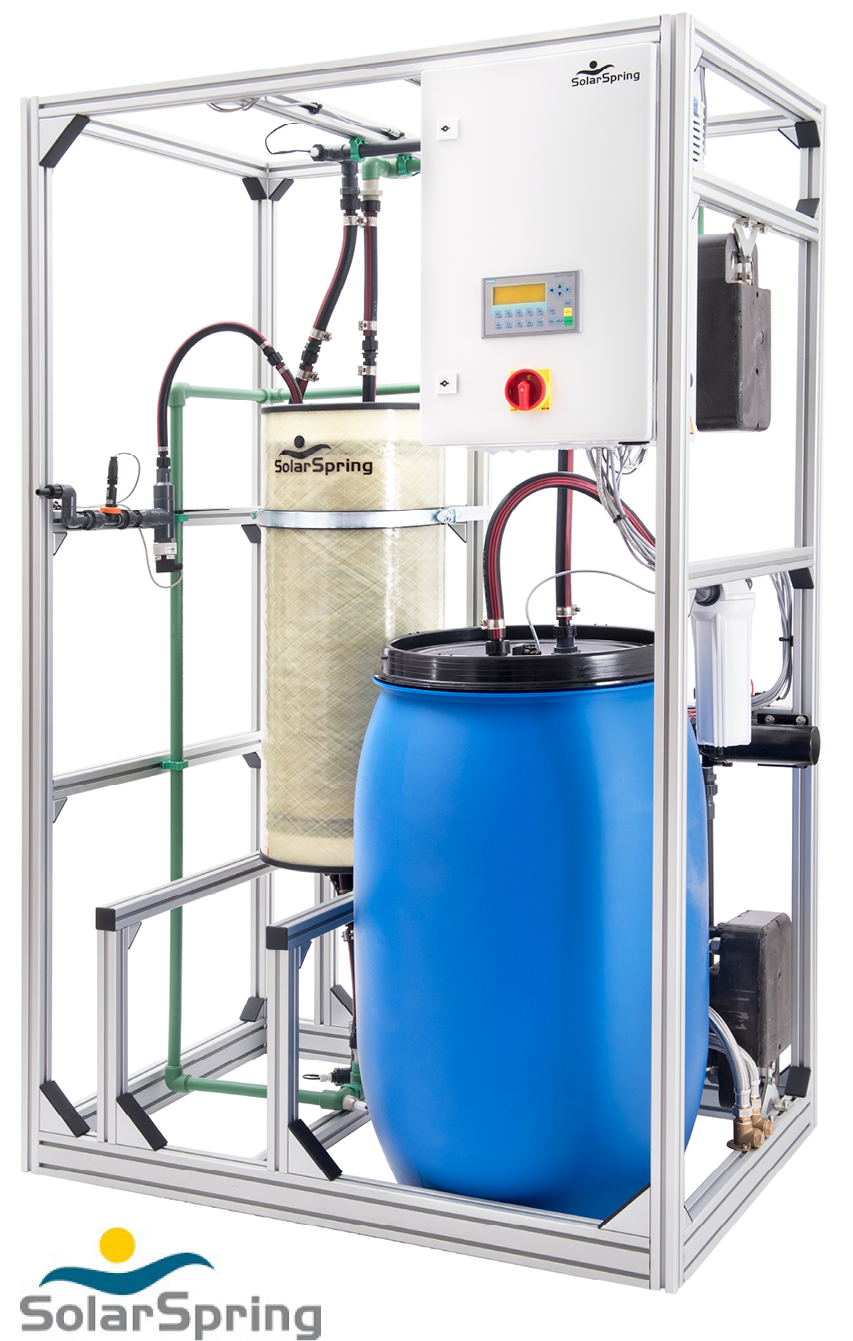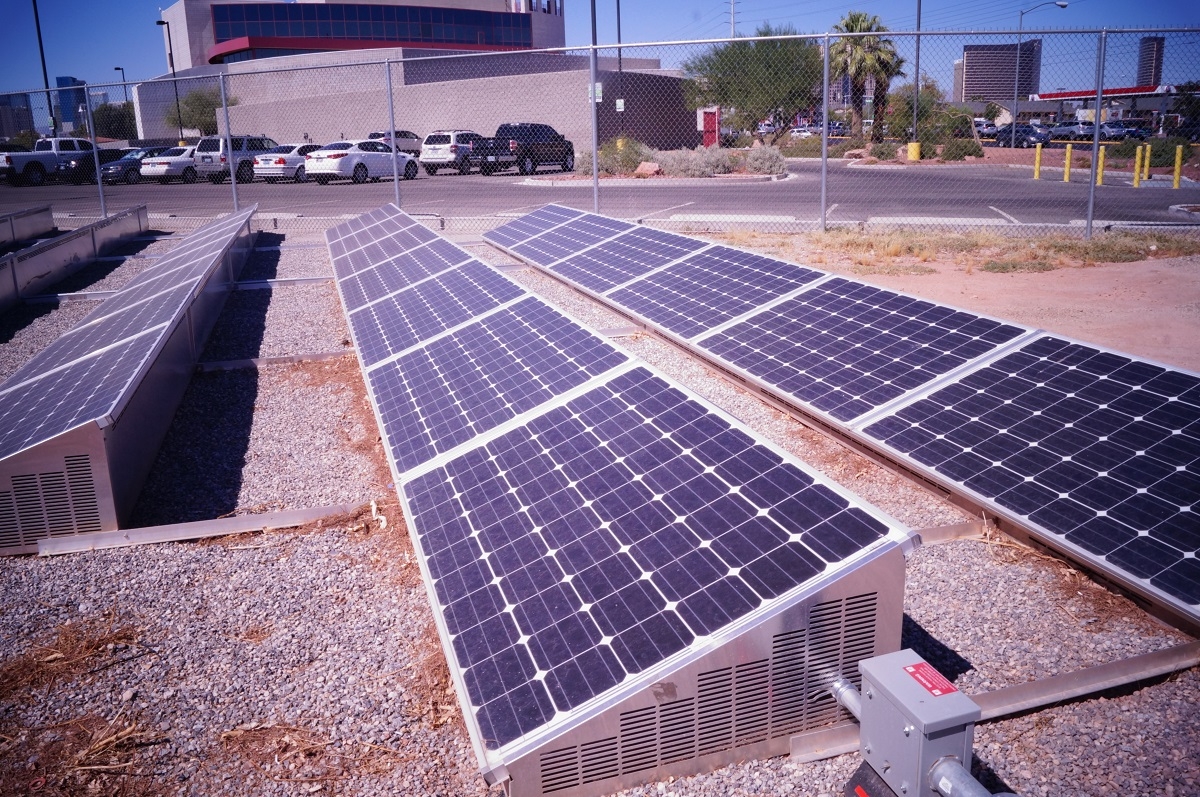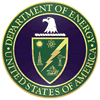Shutterstock.com
Counting the Benefits
NEXUS researchers investigate the potential of using renewable energy for pumping shallow brackish groundwater to generate freshwater
By Jane Palmer
April, 2018
By definition deserts are dry and water is scarce but, sometimes, sources of this precious liquid are hidden in this arid environment. Groundwater aquifers that lie deep beneath the land surface already supply 15% of the Las Vegas water requirements. Now scientists are questioning whether shallow groundwater, which typically contains more salts and is known as brackish water, also has the potential to provide much needed water for human and industrial use.
Due to the depth of the currently sourced aquifers, the water in them is well protected from surface pollutants and requires little processing to make it useable. But the same isn’t true for water from a shallow aquifer that typically contains high levels of total dissolved solids (TDS). To generate usable water from a shallow source it is necessary to pump and to treat that water. NEXUS researchers want to use solar energy for both processes.
“It’s brackish water, which makes the water too salty for drinking,” says Dr. Jacimaria Batista, who is a NEXUS Co-Principal Investigator and Water Lead and a scientist at the University of Nevada Las Vegas (UNLV) “This means it would have to be treated to make it a suitable freshwater source.”
Desalination techniques can remove dissolved solids from such brackish water to produce freshwater but it’s an energy-intensive process. As most forms of energy generation also require water and emit greenhouse gases, the costs of removing the impurities from such shallow water sources could outweigh the benefits. But maybe not.
“Given the high sunlight intensity of the Las Vegas Valley and of other arid regions, using solar energy to pump and treat shallow groundwater may be a viable solution,” Batista says.
To test out this theory, Batista, NEXUS scientist Dr. Sajjad Ahmad and NEXUS graduate student Saria Bukhary, all based at UNLV, are investigating the costs and benefits of using energy generated from solar photovoltaic (PV) panels to pump and desalinate a brackish shallow groundwater source in the Las Vegas Valley.
Solar energy could also be used to power desalination plants. Dr. Sage Hiibel at the University of Nevada Reno is using membrane distillation, a desalination technique that is less energy consuming than other methods, to remove TDS from waters. Membrane distillation can use waste heat, including waste heat from solar plants, to remove TDS from brackish waters.
Currently Las Vegas uses water from the Colorado River and groundwater pumped from a deep aquifer; pumping and treating shallow groundwater would bring a third water source to the Las Vegas water portfolio. “If using solar energy proves viable it could result in increased water resources for the Las Vegas Valley,” Batista says.
Process flow diagram for desalination plant using reverse osmosis (RO). Black arrows show brackish water being treated, and dashed arrows represent residual management.
–Saria Bukhary and Dr. Jacimaria Batista, UNLV
Energy consumption of the desalination plant by percentage.
–Saria Bukhary and Dr. Jacimaria Batista, UNLV
An Unlikely Oasis
Currently the State of Nevada regards the shallow aquifer that lies under the surface in Las Vegas Valley as nothing more than a geological hazard. “Developers and road engineers consider the Las Vegas shallow groundwater a nuisance because often it has to be pumped when roads or homes are constructed,” Batista says. “So pumping this water would benefit builders and engineers in addition to it being a great way to increase water resources.”
To determine if this unlikely water source could be used the scientists are designing a solar-based pumping and desalination system. For the purification process, Hiibel is investigating using the technique of “reverse osmosis,” for membrane distillation. This technology involves heating the brackish water to create steam, which can pass through semi-permeable membranes. The dissolved solids remain on one side of the membrane and the clean freshwater is collected on the other side.
The team investigated the energy needs of such a system using a System Advisor Model developed by the DOE Renewable Energy Laboratory and considered two possible scenarios: One where the plant was operated continually and another where only 9 hours of desalination was performed daily.
“Considering various alternatives is important because solar plants work only during the day when there is sun,” Batista says. During the night, pumping and treating the water wouldn’t be possible using solar power unless storage batteries are available. Solar power still could be used to pump and treat the water in the daytime, however, and stored in tanks for future use so 24-hour operation is not essential, Batista says.
The scientists also compared the energy needs of different desalination techniques such as Vapor Compression Distillation. Finally, they investigated the carbon emissions that would be avoided if the PV system were used for pumping and desalination.
Pilot-scale Direct Contact Membrane Distillation System
–P. Siegmann, SolarSpring Photo
A Water and Environment Win-win
When the scientists analyzed the model data they found that the real “gas guzzler” in purifying the shallow groundwater was the Vapor Compression Distillation technology. This technique used 94% of the overall energy consumption required to pump and desalinate the shallow groundwater, whereas reverse osmosis only used 4% of the combined energy.
The team found that using energy efficient reverse osmosis, solar power was up to the job, both technically and economically for both scenarios. A 5.5 megawatt PV system, along with 255 Megawatt battery storage could keep the pumping and desalination process going continually.
But constructing a solar plant of this size might not always be feasible, Batista says. The shallow groundwater is spread throughout the Las Vegas Valley and to pump and treat it would require a solar plant that might require more land than is available.
Other trade offs need to be considered when implementing such systems. “The cost of the battery system must be weighed against operating only during the sunny hours,” Batista says.
The team clearly found, however, that using solar power to fuel the freshwater generation, instead of a fossil fuel energy source, made for a reduction of carbon emissions to the tune of 4,700 metric tons of carbon dioxide a year.
“The study showed that sustainable desalination of brackish groundwater for Las Vegas Valley is achievable using solar PV and may be suitable for locations in the Valley where sufficient land or landholdings in buildings is available for the plant installation,” Batista says. “Although the cost of pumping and treating brackish water with solar energy may not be significantly cheaper, there are intangible benefits associated with the process such as decreased carbon dioxide emissions, and an additional secure water source.”
Urban solar panels at University of Nevada, Las Vegas test site.
–Lori Ciccone Photo
_______________________________________
Challenges and Opportunities in the Water-Energy Nexus
_______________________________________
In 2014, the U.S. Department of Energy (DOE) released a report explaining how energy and water are intrinsically interconnected: Water is directly or indirectly required to produce energy and energy is required to treat and distribute water for human use. The report also outlined the challenges of climate change to this symbiotic relationship, such as the consequent increased demands for electricity for cooling and the decreases in water availability. To address such challenges the DOE report authors suggest six guiding strategic pillars, one of which is to “increase safe and productive use of nontraditional water sources.”
“The research by our NEXUS scientists using a solar power to pump and treat shallow groundwater exemplifies an innovative strategy to use a nontraditional water source“ says Dr. Gayle Dana, NEXUS Project Director. “By using a renewable energy source this strategy would provide a clean and sustainable path toward continuing to exploit this resource in the years to come.”
_______________________________________

NEXUS Notes is a monthly publication of the Solar Nexus Project, which is a five-year research project funded by the National Science Foundation’s Established Program to Stimulate Competitive Research “EPSCoR” (Cooperative Agreement #IIA-1301726) focusing on the nexus of (or linkage between) solar energy generation and Nevada’s limited water resources and fragile environment.
Any opinions, findings, and conclusions or recommendations expressed in this material are those of the author(s) and do not necessarily reflect the views of the National Science Foundation.
_______________________________________
If you would like to know more about the NEXUS project,
please contact, Dr. Gayle Dana
Gayle.Dana@dri.edu
530-414-3170
_______________________________________

